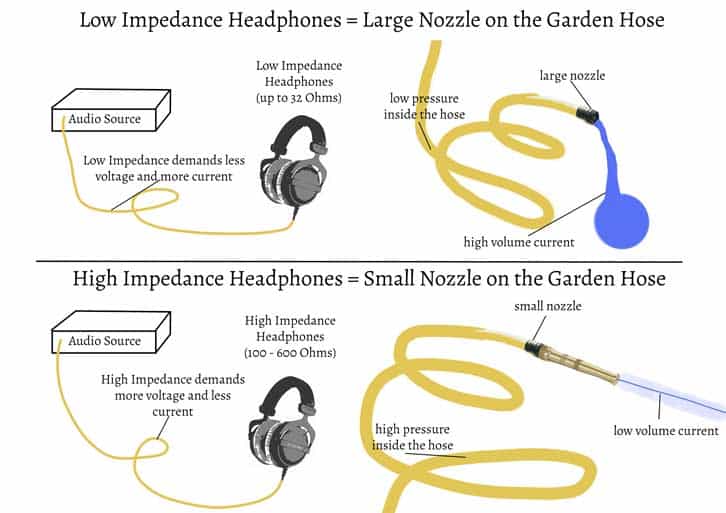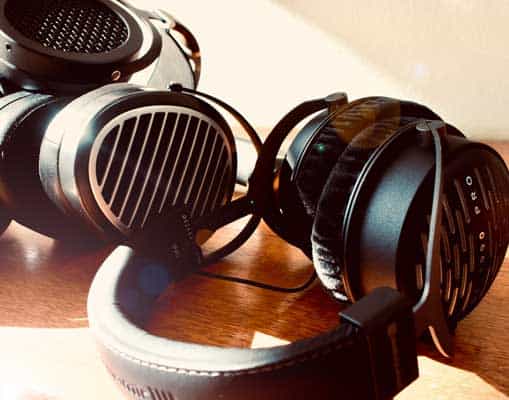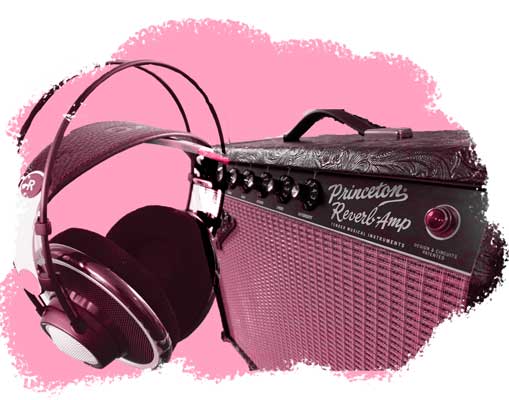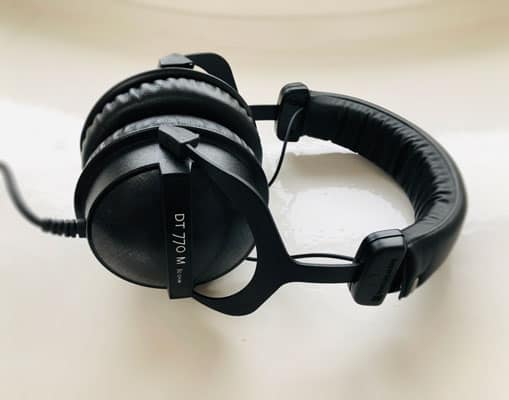What is Impedance in Headphones?
Impedance in headphones is the measure of the opposition of the headphones to the audio source signal. This resistance is measured in Ohms also written with the symbol Ω.
It worth noting that wireless headphones and wireless earbuds have their own built-in amplifiers, so impedance matching is not an issue.
To clarify the terms ohms impedance headphones, read on. See here, for all audio gear discussion and reviews.
Electrical Impedance: The Nozzle on the Hose
In a basic electrical circuit, there is a battery, wires and a load (or resistor), which could be a lightbulb or whatever is being powered. The load has an opposition to the flow of current, sort of like pressure, known as resistance.
Impedance is the combined resistance of a circuit to the current flowing through it.
Audio signals use an alternating current (AC), which involves a complex circuit. Measuring the resistance in a complex circuit is the composite of the technical terms ‘resistance’ and ‘reactance’, consolidated into one measurement: impedance.
If we think of electrical current like water flowing through a garden hose, current would be the volume of water traveling through the hose, voltage would be the water pressure, and impedance would be the size of the nozzle at the end of the hose.
With your garden hose, a smaller nozzle will increase the pressure in the hose, and the volume coming out of the hose will be reduced. With your headphones, a higher impedance (smaller nozzle) will demand more voltage (pressure in the hose) and the amount of current (volume of water) traveling through will be reduced.
Lower impedance headphones (larger nozzle) will receive more current (volume of water) and require less pressure (voltage).

This relationship can be elegantly expressed with the following equation: I = V/R. (I = current; V = voltage; R = resistance) This is known as Ohms Law.
Regarding headphones, this relationship between voltage, current, and impedance means that headphones and amplifiers work best when the numbers match up.
Impedance Matching
If your cans are paired with an appropriate device you can get the best results, including ideal loudness.
Matching your headphones’ load impedance with an appropriate output impedance from your audio source is referred to as impedance matching.
‘Matching’ is a misnomer, however. It’s more like finding a suitable partner. In fact, matching the impedance numbers (source to load) will almost always result in poor sound quality.
The audio source impedance is typically a low number, less than 4 Ohms. In the exceptional case of some transformerless amps, it can be as high as 120 Ohms.
A good rule of thumb is the load impedance (headphones) should be 3-8 times the value of the source impedance (output impedance of your amplifier, phone, audio interface, whatever is driving the headphones).
What if I mismatch the impedance? Will something break?
In most cases, impedance mismatch won’t destroy your headphones or your audio source.
The exception is if you were to plug low-impedance headphones into a powerful amplifier and jack the volume up past their threshold. In this case, you run the risk of blowing them out.
High impedance cans plugged into a battery-powered source, on the other hand, will often be too quiet.
Matching Headphones with a Proper Source
Low Impedance
Up to 32 Ω
This lower range is typically suited to battery-powered amps such as phones, tablets, and computers.
Middle of the Road
32 – 100 Ω
This range works for a variety of sources. To achieve optimal sound use an amp or audio interface, but they will still function well with battery powered sources. DJ Controllers tend to be best suited for this middling impedance range.
High Impedance
100 – 600 Ω
These headphones are typically built for critical listening and studio use. For best results, these cans will require a dedicated amplifier or a audio interface with an appropriate integrated amp.
Are Higher Impedance Headphones inherently better?
No. Higher impedance does not translate to better headphones.
This common misconception roots itself in the way headphones used to be.
The first dedicated headphone jacks in the 1960s up to the 1990s were designed by dropping the power from the speaker outputs with resistors resulting in high output impedance.
The first high-end headphones at the time were designed to deal with these outputs.
Advantages of High Impedance Headphones
Higher impedance does not necessarily mean better sound quality but there are significant advantages to higher impedance designs.
Higher impedance headphones use a thinner wire for the voice coil resulting in a lower mass. With less mass to move, they are easier to drive. Lower mass almost always means better transient response.
The thinner the wire used in the voice coil, the more times it can be wrapped around. More wrapping results in a stronger magnetic field which tends to reduce overall distortion.
As discussed above, the higher impedance also demands less electrical current, which also reduces overall distortion.
Low Impedance Headphones: Better Suited for Your Portable Device
With the development of phones and other battery-powered audio sources, low-impedance headphones are more in demand.
This shift can be explained by Ohms Law (I = E/R. (I = current; V = voltage; R = resistance)). The limited power of a battery cannot create more voltage, so the only way to achieve more current is to lower the impedance (overall resistance to the current) of the headphones.
The shift to battery power has also pushed the development of headphone driver technology.
New designs such as planar magnetic drivers are generally easier to drive with relatively lower impedance and the ability to yield consistent impedance across all frequencies. (Something most headphones struggle with)
Do I need a Headphone Amp?
For the record, your phone has an amplifier in it. Every audio source uses an amplifier of some sort to drive the sound. Some are just weaker than others.
When we talk about amplifiers, of course, we are usually discussing the standalone dedicated headphone amplifiers. Examples include something like the SMSL SP200, the Rupert Neve RNHP or the Benchmark AHB2.
If your headphones are not loud enough or they have obvious problems with your audio source, a dedicated headphone amp can help. Keep in mind that if your audio source has a low output impedance and enough power, adding an amp could make your sound worse.
Unfortunately, there is no metric that reliably measures the overall efficiency of your headphones. That said, impedance and sensitivity can give you a general guide.
Just don’t overdrive a high power amp with low impedance headphones. Beyond that, trust your ears.
A Note about Sensitivity
It is worth mentioning sensitivity as it is a metric you might come across for matching your source to your headphones.
Sensitivity is a measurement of loudness at given voltage (usually dB/1mW). Generally, the higher the sensitivity rating, the less power you will need to drive them.
Headphones typically fall in the range of 90-110 dB/1mW. Headphones in the low 90s are going to need significant power to achieve an adequate volume, while headphones in the 105-110 dB/1mW should be easy to drive.
The problem with this metric is that different manufacturers measure sensitivity differently. Sometimes it is given in dB SPL/mW, dB SPL/V, dB/V, or just dB for sensitivity relative to voltage.
With different voltages coming from different sound sources and the varying ways in which the manufacturers label it, sadly, sensitivity is not a reliable metric by itself.
Questions or Comments?
Join the discussion here on Facebook.


